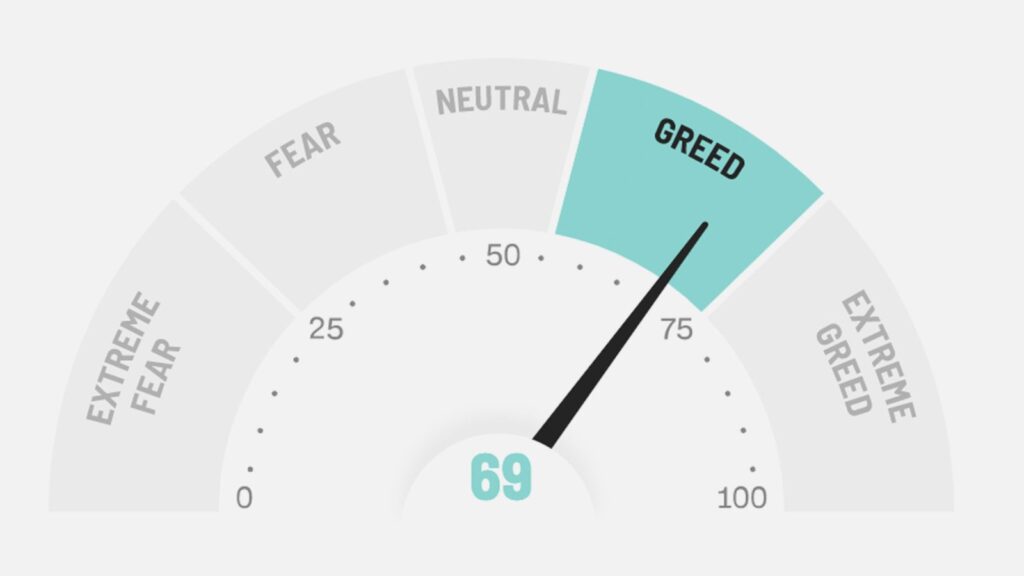Imagine standing amidst a sea of people at a grand concert. The electrifying music pulses through the air, and you can feel the excitement building with every beat.
As the artist hits a high note, the crowd erupts in cheers, and an aura of euphoria envelops the arena. Now, think about what happens if the artist misses a note or two—the collective disappointment is palpable, and the energy takes a temporary dip.

In this mesmerising scene, you’re witnessing the power of collective emotion. The concertgoers’ reactions mirror their emotional connection to the music, influencing the overall atmosphere. This phenomenon, where emotions converge to shape the experience, is not unique to concert halls.
Welcome to the world of Forex trading, where traders’ emotions, opinions, and attitudes collectively shape the landscape—the realm of market sentiment.
Market sentiment is the overall emotional and psychological outlook of traders and investors in a financial market. It represents the collective mood—positive or negative—shaping trading decisions and influencing asset prices.
For instance, during periods of economic growth, traders might exhibit optimism, driving up the value of a nation’s currency. Conversely, during times of uncertainty, fear may trigger a rush to safer currencies. This emotional ebb and flow is where sentiment analysis steps in, offering a glimpse into market psychology.
Sentiment analysis is the process of assessing and interpreting the emotional tone and attitude of text or data, often from sources like news, social media, or surveys. In the context of Forex trading, sentiment analysis helps traders gauge market participants’ feelings and opinions to predict potential price movements.
Sentiment analysis can be particularly valuable in various situations where market emotions play a significant role in shaping price movements.
Some of the prime scenarios to leverage sentiment analysis include:

Much like seeking reviews before choosing a restaurant to dine at, traders in the Forex market turn to various sources of sentiment data to gauge the pulse of market participants.
These sources serve as sentiment indicators, helping traders decipher the prevailing market mood. Here are some key sources:
Social Media
Think of social media platforms as the bustling hub of market chatter. Just as you might read reviews or comments about a restaurant’s ambiance, service, and food quality, social media discussions can provide insights into how traders feel about specific currencies or market events. Platforms like Twitter, Reddit, and trading forums are rich sources of real-time sentiments.
News Outlets
Similar to reading news reviews to stay informed about the latest restaurant openings, news outlets provide up-to-date information about economic data releases, geopolitical developments, and other factors impacting the market sentiment. News articles often contain quotes and expert opinions that reflect the current sentiment toward currencies or assets.
Trader Surveys
Imagine conducting a survey to understand people’s preferences before selecting a dining spot. In the Forex world, trader surveys collect opinions and expectations from market participants. These surveys can shed light on traders’ sentiment biases, giving you insights into whether they are bullish or bearish on a particular currency pair.
Sentiment Analysis Tools
Just as you might use food review aggregators to gather overall restaurant ratings, sentiment analysis tools consolidate and quantify sentiment data from various sources. These tools process massive amounts of text data from news articles, social media posts, and more to provide sentiment indicators that help traders understand the prevailing mood.
Economic Data Releases
Economic indicators such as consumer sentiment indexes can directly impact market sentiment. These indicators measure consumers’ attitudes toward the economy and their spending intentions. Positive or negative sentiment in these indexes can influence traders’ outlook on currency pairs.

Think of sentiment indicators and tools as your dashboard for navigating the Forex market—a dashboard that provides vital insights into market emotions.
These tools act like gauges, offering real-time readings of traders’ sentiments and guiding your trading decisions. Here are key ones:
Let’s draw a parallel between trading and dining at a bustling restaurant to understand the concepts of contrarian and consensus trading.
Contrarian Trading:
Imagine you’re at a restaurant where a particular dish is causing a stir due to rumours of its taste. Contrarian traders in the financial world would be the equivalent of ordering that dish, believing that the rumours might be exaggerated. They take a contrarian stance, going against the prevailing sentiment, and aim to profit from situations where the market might be overreacting.
Consensus Trading:
Now, picture a different scenario where a dish on the menu is in high demand, with every table ordering it. Consensus traders align with this majority sentiment. Just like choosing the popular item, consensus traders follow the crowd and base their trading decisions on prevailing market sentiment. They believe that the wisdom of the crowd guides their choices.
Choosing Your Approach:
Deciding between these trading approaches depends on your assessment of the market and your personal strategy. Some traders prefer the contrarian approach, seeing opportunities where others might miss them. Others find comfort in consensus trading, believing that collective market sentiment holds valuable insights.
Utilise sentiment analysis like a skilled traveller navigating diverse landscapes. Here’s how:
In conclusion, sentiment analysis offers a valuable tool for unravelling emotional dynamics within the Forex market. Similar to skilfully navigating various scenarios, its integration enhances trading strategies. By embracing its insights while acknowledging its limitations, traders can effectively leverage market sentiment. Adroit incorporation of sentiment analysis empowers informed and prudent trading decisions, enhancing effectiveness within the dynamic domain of Forex trading.